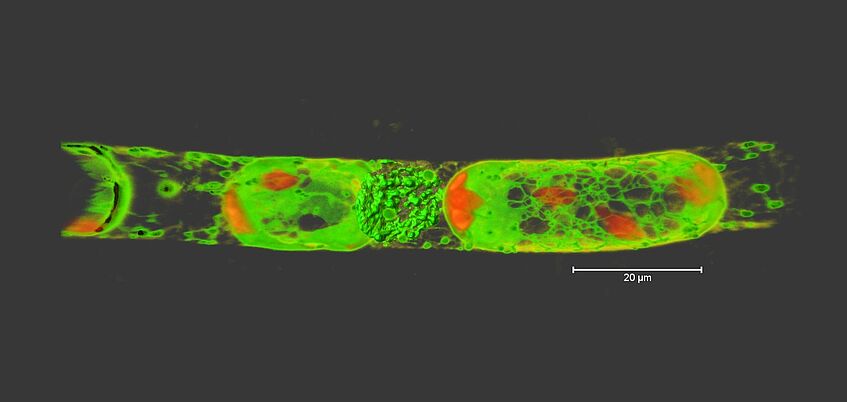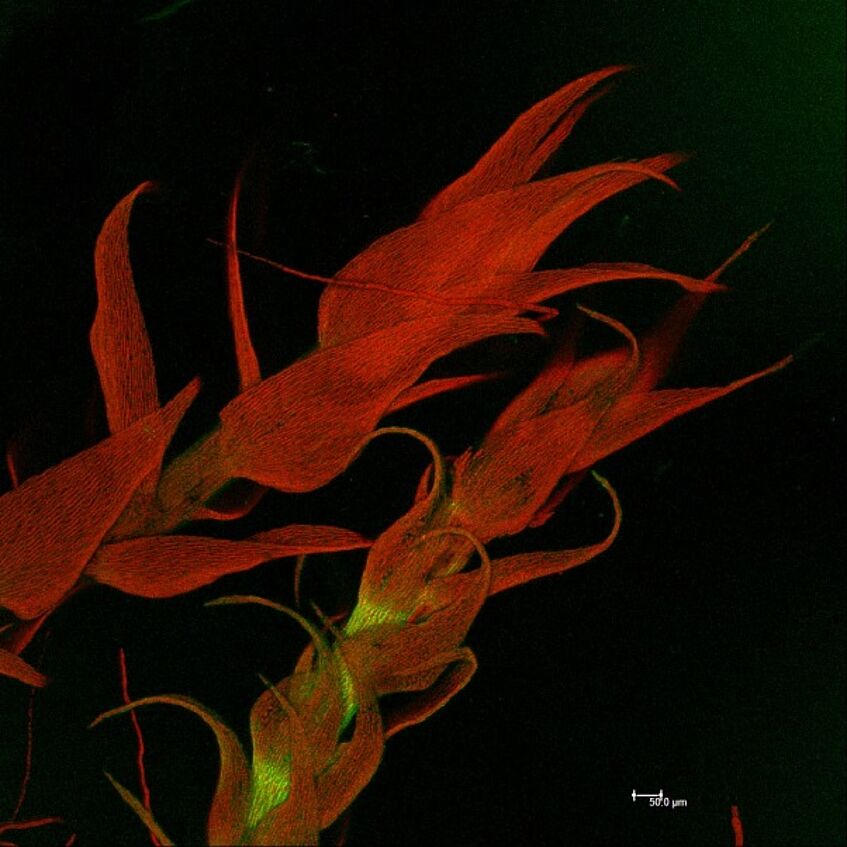Structural and functional plant cell biology - Ingeborg Lang group
Room: 3.045
Djerassiplatz 1
1030 Vienna, Austria
M: +43-4277 76530
ingeborg.lang@univie.ac.at
Research focus
I. The structural aspect of water loss
Osmotic water loss can be simulated by submersion of a plant sample in hypertonic solutions. Water efflux from the vacuole by the semipermeable membranes causes a loss of turgor pressure and the cell wall is relaxed. If the water loss continues, the living protoplast detaches from the cell wall – a phenomenon called plasmolysis. Plasmolysis is widely used to produce isolated protoplasts, to demonstrate membrane permeability and the osmotic properties of plant cells in student courses or to investigate the cell wall and plasma membrane apart from each other. Although plasmolysis has rarely been reported to occur in nature, it is still a great experimental tool to analyze structural adjustments of plant cells to turgor changes. Additionally, the detachment of the protoplast from the cell wall in plasmolysis is not complete. Hechtian strands and a Hechtian reticulum maintain the contact between the plasmolysed protoplast and the cell wall. Hence, plasmolysis is a simple way to investigate membrane-wall connections, the contact of cell neighbors and the structural changes at the cell cortex.

Two plasmolysed protoplasts of Physcomitrealla patens protonema showing the ER at the connecting cell wall and in protoplasts (green), the plasma membrane (yellow), and chloroplasts (red).
II. Ecological aspects of heavy metal stress in bryophytes
Evolutionary situated between green algae and seed plants, bryophytes were among the first land plants. Unlike seed plants, mosses do not possess a sophisticated root and vascular system. They take up water, nutrients and minerals by the entire surface and are often used in biomonitoring. Bryophytes specialize to less favorable habitats with particularly high or low solar irradiation, stagnant moisture or drought and metal contaminated substrates with barren soil. How do these specialists protect themselves and can we possibly find similarities in crop plants to help them grow on less favorable soils as man-made environmental contamination increases? We use material from the field but also cultivate the plants in sterile conditions with gradient contents of metals or use simulated rain conditions to provide precise answers on the toxicity of the respective metal, its availability, its impact on growth and morphology as well as its allocation within different tissues.

Two moss plantlets of Atrichum undulatum after labelling with a zinc specific marker (green).
